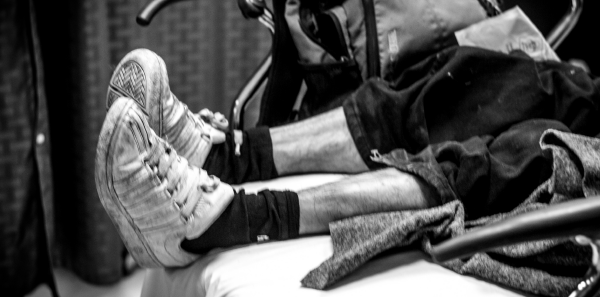
“Don’t worry about them, doc—they’re a frequent flier.”
Explore This Issue
ACEP Now: Vol 37 – No 09 – September 2018“Doc, they’re just drug-seeking.”
These phrases are much too common in our line of work and are often dangerous introductions to patients we have yet to meet. They can immediately introduce bias, and that, in turn, can lead a provider down a path detrimental to patient care. Early in my training, I learned this lesson the hard way.
As a young resident, I had a patient who was initially described to me as a “frequent flier.” This patient was homeless and well-known to the senior staff members as someone who frequented the emergency department for alcohol and drug intoxication. I went to assess “Mr. X,” and he was profoundly somnolent, smelled of alcohol, and simply was not engaging in any part of my exam. “He’s always like this,” a nurse told me.
I decided I would come back later and reevaluate him, thinking he was just drunk. The second time around, there wasn’t much change. I asked the nurse to obtain a finger-stick glucose and decided I would come back again later. I continued on with the rest of my shift and forgot about him after seeing other patients during a busy shift.
Almost three and a half hours after his initial arrival, I asked the nurse to try and ambulate Mr. X. Moments later, the nurse came back to me to say he would not wake up. I rushed over to evaluate him. “Mr. X! Mr. X!” I yelled. Nothing. I opened his eyes myself, and he had an enlarged right pupil that was barely reactive. My heart sank to my stomach, and I rushed the patient over to the CT scanner myself. My eyes were fixed on the computer screen, and there it was in plain sight staring right back at me: a large acute subdural hematoma with midline shift. Mr. X immediately got intubated and was rushed to the operating room. His life would never be the same, and neither would mine.
Bias is defined as a disproportionate weight in favor of or against one thing, person, or group compared with another, usually in a way considered to be unfair. A number of biases played into this particular case. I anchored early on the fact he was a frequent flier and usually presented with alcohol intoxication. I did not consider a broader differential for his somnolence.
He was homeless, and as I reflect now on the case, I see class bias affected how urgently I initially cared for him. Current literature indicates that although many physicians, regardless of specialty, demonstrate an implicit preference for white, upper-class individuals, this bias does not appear to impact their clinical decision making but can impact the patient experience.
Since that incident, I began asking myself questions to reduce the potential bias I may inherently bring to work:
- How do I feel toward this patient?
- Is there anything else to be found?
- Is there anything that doesn’t fit? Have I distorted any of the facts?
- Am I missing a potentially life-threatening process or mimic?
- Does the information support my judgment and plan?
- Have I relied on any anchors or information that is too readily available?
We all carry implicit and explicit biases. Our job as physicians is to recognize and work to put aside our biases to provide the best care for our patients. In our line of work, the stakes are too high to have bias impact our clinical interactions and the care we deliver. Take it from me—this is not a lesson you want to learn the hard way.
Pages: 1 2 | Multi-Page






One Response to “Don’t Let Bias Affect How You Treat Your Patients”
November 3, 2018
Annette l BentonGreat article